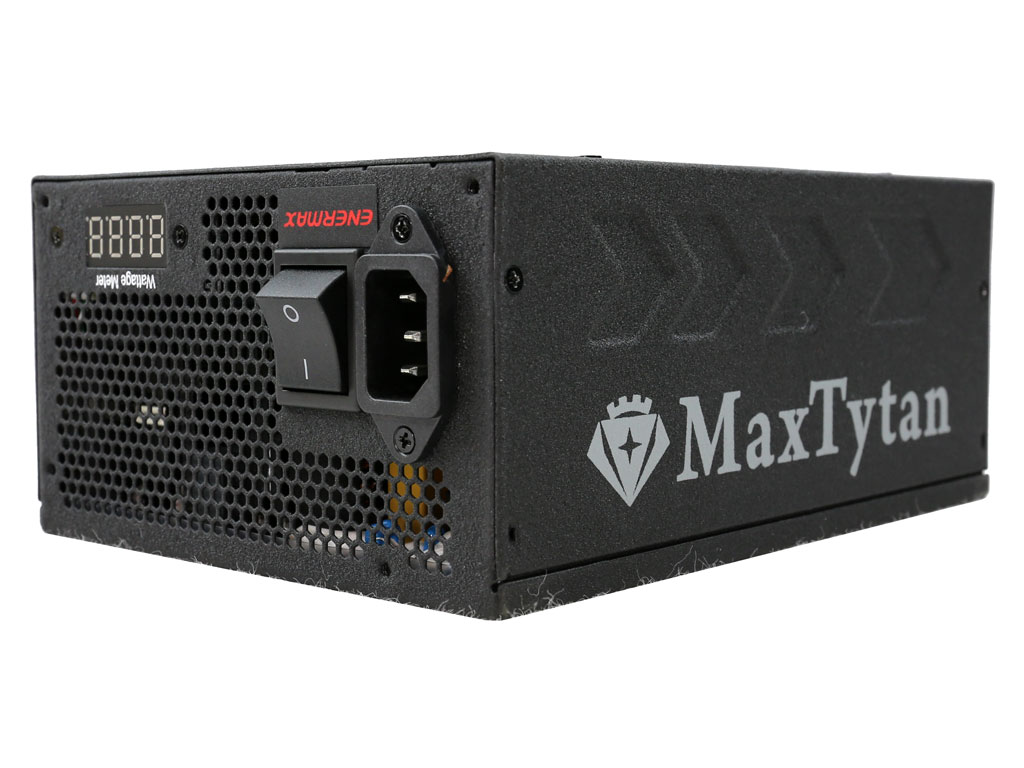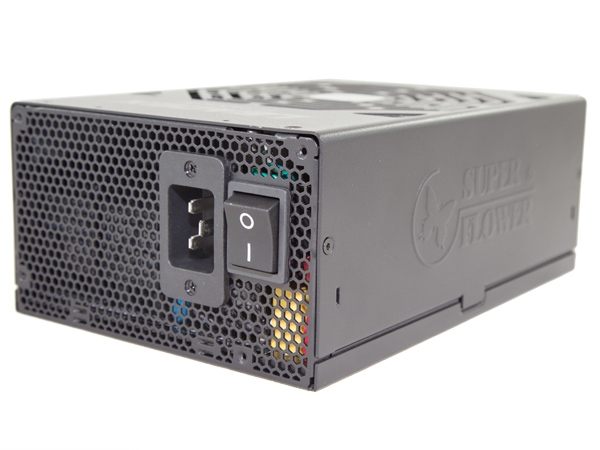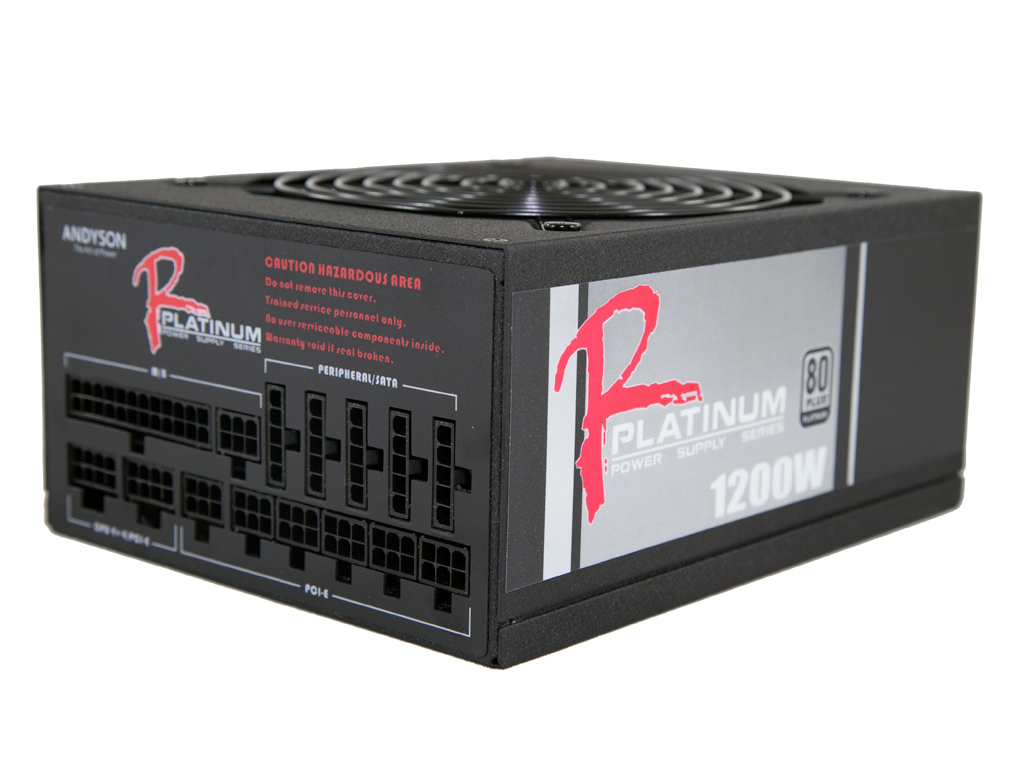Best Power Supply Units for Cryptocurrency Mining
Best Power Supply Units For Professional CryptoCurrency Mining
Why you can trust Tom's Hardware
Pro miners are more extreme users with systems installed in dedicated spaces (farms), many of which lack air conditioning. We have to anticipate higher ambient temperatures as a result (as high as 40ºC in some cases!). Even if a farm is equipped with HVAC, imagine how hard it is to maintain comfortable temperatures, given the massive thermal output of 10s or 100s of fully utilized GPUs. This is why, for our professional mining category, we only accept PSUs equipped with ball-bearing fans. Any FDB-derivative fan is bound to fail quickly because its lubricant evaporates under such harsh conditions. Since mining farms are typically isolated from where people eat, sleep, or work, noise isn't as much of a concern. In fact, we embrace aggressive fan profiles; they're often what keeps a PSU alive under full load in a hot room.
MORE: Best Deals
Best PSUs For Professional CryptoCurrency Mining
3/9/2018 Update: The Enermax MaxTytan 1250W and EVGA 1600 T2 have been added.
2/6/2018 Update: We made some changes to the requirements and the recommendations. The 17ms hold-up time is now a recommendation and not a requirement, allowing the EVGA 1600 P2 to be included in the list.
MORE: Best Power Supplies
MORE: How We Test Power Supplies
MORE: All Power Supplies Content
The more stringent requirements tied to our professional classification limits the number of models that qualify for this top tier. Ball bearing-equipped fans and higher capacity levels are simply must-haves.
These are the requirements and recommendations we're defining for professional-oriented cryptocurrency mining PSUs:
Requirements
- 1.2kW or higher capacity.
- 115V: ETA-A (88-91%) and higher efficiency certification.
- 230V: ETA-A 230V (90-93%).
- 80 PLUS Platinum or higher efficiency.
- Lower than 50mV ripple at +12V under full load at increased operating temperatures (>45°C).
- Double-ball or magnetic bearing fans. All other types are excluded.
- At least eight 6+2 pin PCIe connectors, or ten 6+2 pin connectors on PSUs with over 1.45kW capacity.
- At least four 4-pin Molex connectors on two cables, or six 4-pin Molex connectors on three or more cables for PSUs with over 1.45kW capacity. In case the PSU has more 6+2 pin PCIe connectors than the required, we are covered with 4-pin Molex connectors regardless capacity.
- All peripheral cables should use 18-gauge wires minimum.
- For 1.4kW and stronger PSUs a C19 coupler is required, while an AC power cord with 14AWG wires should be used. For lower capacity PSUs an AC power cord with 16AWG gauges at least is required. The AC power cord requirement applies only if the PSU is provided with an AC power cord.
- Support the essential protection features (SCP, OPP), including over-temperature protection.
- Accurate power-good signal. The power-good signal has to have at least a 1ms delay, dropping at least 1ms before the rails go out of spec.
- Complete EMI filtering stage (minimum components: 4x Y caps, 2x X caps, two CM chokes, an MOV), along with inrush current protection (an NTC thermistor is required, which ideally should be supported by a bypass relay).
- Impeccable build quality, including quality MOSFETs and high-quality bulk/filtering capacitors (105°C rating and a majority of filtering caps on the secondary side must have >5000h lifetime). The use of polymer caps on the secondary side is preferred.
Recommendations
- Ideally the peripheral connectors should have 15cm distance between them.
- Dedicated cables with 6+2 pin PCIe connectors are preferred. In case a cable hosts two PCIe connectors, it needs to have 16AWG gauges up to the first connector for the six out of the eight pins at least.
- Every PSU with 1.3kW or more capacity should use an AC power cord with 14AWG gauges and a C19 coupler
- Over 17ms hold-up time and an accurate power-good signal, which has to be at least 16ms. The power-good signal has to have at least a 1ms delay, dropping at least 1ms before the rails go out of spec.
- One year minimum warranty for 24/7 operation under full load at 35-40°C
The major differences between our home and professional cryptocurrency mining PSU requirements are the capacity, efficiency, and fan specifications. Also, notice that there is no output noise ceiling in this category, and we're also recommending at least one year of warranty coverage for 24/7 operation under full load at 35-40°C. That's going to be difficult to satisfy; we don't know if any manufacturers will be brave enough to guarantee their hardware for continuous operation under full load at 40°C. Usually, only server-class PSUs can withstand those conditions. Finally, the over 17ms hold-up time rule is a recommendation for pro mining PSUs, since hold-up time doesn't play so much in mining applications. However we did keep the accurate power-good signal requirement since it affects the system's overall health.
It goes without saying that, if you own a mining farm with lots of systems, you'll save a ton of money on electricity using 230V mains. In addition, thanks to higher achievable efficiency, 230V input facilitates lower thermal loads, extending the life of your PSUs.
Best PSUs For Professional CryptoCurrency Mining
Reasons to buy
Reasons to avoid

Reasons to buy
Reasons to avoid

Reasons to buy
Reasons to avoid

Reasons to buy
Reasons to avoid

Reasons to buy
Reasons to avoid

PSUs That Didn't Make It (And Why)
The list of PSUs that don't qualify for our list includes the following models so far:
- be quiet! Dark Pro 1200W: HDB fan
- Cooler Master MasterWatt Maker 1200: power-ok signal
- Corsair AX1600i: FDB fan
- Enermax Platimax D.F. 1200W: 6x PCIe connectors
- Rosewill Tokamak 1500W: power-ok signal, Ripple
- Silverstone Strider Gold S 1500W: 8x PCIe connectors
- Silverstone Strider Titanium ST1500-Ti: power-ok signal
- SilverStone Strider Platinum ST1200-PT: power-ok signal
- Thermaltake Toughpower DPS G RGB 1500W: HDB fan, power-ok signal
- Thermaltake Toughpower Grand RGB 1200W Platinum: power-ok signal
Most of them suffer inaccurate power-good signals. This is an issue that seems to plague high-capacity PSUs in general. There is a unit (Rosewill Tokamak 1500W) also which demonstrates high ripple at +12V under full load. In order to achieve the highest possible efficiency, some manufacturers use fewer filtering components on the secondary side, and this inevitably leads to lousy ripple suppression. It'd be better if those companies used a more advanced platform instead of cheap tricks.
The SilverStone Strider Titanium with 1.5kW capacity which used a DBB fan, which is ideal for mining purposes, also has an inaccurate power ok signal so it is excluded from the list.
The Corsair AX1600i would be excellent if it used a DBB or magnetic bearing fan; the same goes for the be quiet! Dark Pro 1200W which offers plenty of connectors.
Disclaimer: Aris Mpitziopoulos is Tom's Hardware's PSU reviewer. He is also the Chief Testing Engineer of Cybenetics, and developed the Cybenetics certification methodologies apart from his role on Tom's Hardware. Neither Tom's Hardware nor its parent company, Purch Media, are financially involved with Cybenetics. Aris does not perform the actual certifications for Cybenetics.
- 1
- 2
Current page: Best Power Supply Units For Professional CryptoCurrency Mining
Prev Page Best Power Supply Units For CryptoCurrency Mining At HomeGet Tom's Hardware's best news and in-depth reviews, straight to your inbox.

Aris Mpitziopoulos is a contributing editor at Tom's Hardware, covering PSUs.
-
abryant Archived comments are found here: http://www.tomshardware.com/forum/id-3539437/power-supply-units-cryptocurrency-mining.htmlReply -
ihateregister I always enjoy reading articles by non technical people. Refurbished Server Power supplies are a much better deal. Costing pennies on the dollar compared to all these overpriced and inefficiently rated power supplies. Crypto miners need a strong 12 volt rail, not a generic PC power supply. Caveat Emptor!Reply -
Olle P Reply
I agree! If making money is the objective you want to spend as little as possible to get something "good enough".20784776 said:... Refurbished Server Power supplies are a much better deal. Costing pennies on the dollar...
-
Aris_Mp Server PSUs lack the minor rails which are essential to any desktop PC to operate, and all desktop PSUs for almost a decade now have a strong +12V rail and as for efficiency, the desktop PSUs are on par with the server ones although they have DC-DC converters, which cost in efficiency, are much more silent and have way better ripple suppression.Reply
I won't recommend to my readers getting a used server PSU (or a used PSU in general) which can blow sky high once loaded, since you simply don't know how heavily it was used before. On top of that, server PSUs are meant to operate 24/7, so don't expect to find a lightly used one, unless it had a problem from the start and it was sent for repair (and afterwards it is sold are refurbished). -
Olle P Reply
Server PSUs are designed to run hard 24/7 for a decade or so.If it's only a few years old there's no problem, since one can expect the mining operation to last for five years or less.20786533 said:Server PSUs lack the minor rails which are essential to any desktop PC to operate, ...
I won't recommend to my readers getting a used server PSU (or a used PSU in general) which can blow sky high once loaded, since you simply don't know how heavily it was used before. On top of that, server PSUs are meant to operate 24/7, so don't expect to find a lightly used one, ...
As for the minor rails those can be covered by a second, less powerful and way cheaper, PSU.
Calculating the benefits of power efficiency a simple figure is that 1% difference in efficiency (between two PSUs) translates to a difference in power consumption by about 1.5 kWh/month when using 1 kW 24/7.

